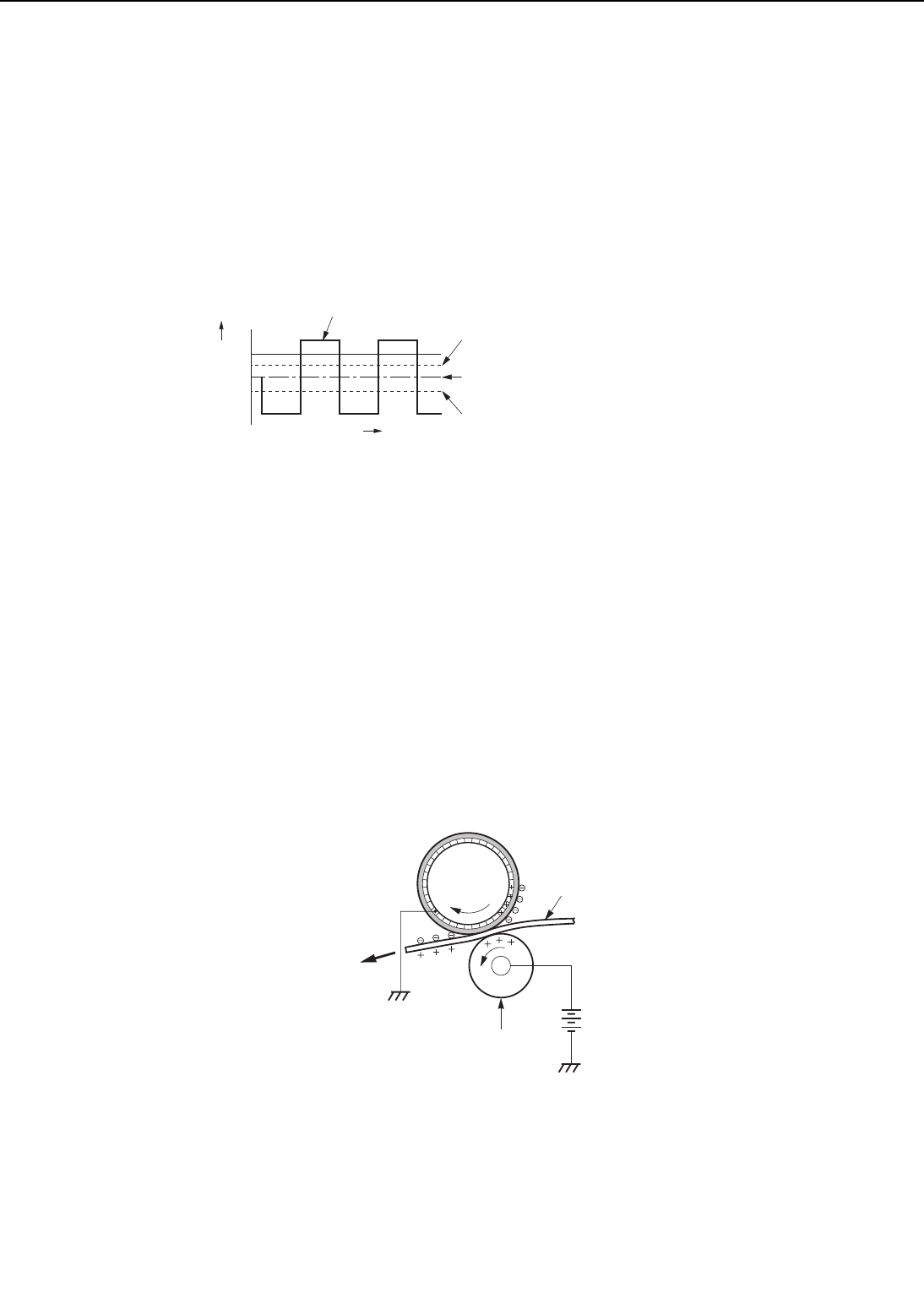
As shown in Figure 2-4-8, the developing unit consists of a developing cylinder and a rubber
blade. The developing cylinder rotates around a fixed internal magnet.
The single-component toner consists of magnetite and a resin binder, and is held to the cylin-
der by magnetic attraction. The toner is an insulator, and acquires a negative charge from fric-
tion of the rotating cylinder.
The areas on the drum that were exposed to the laser beam have a higher potential (are less
negative) than the negatively charged toner particles on the developing cylinder. When these
areas approach the cylinder, the potential difference projects the toner particles to them.
This is called toner projection, making the latent image on the drum visible.
Figure 2-4-9
An AC bias is applied to the developing cylinder to help project the toner particles to the drum
surface and improve the contrast of the printed image. The center voltage of the AC bias (1600
Vp-p) varies with the DC bias voltage. The change in the DC bias changes the potential differ-
ence between the cylinder and drum so the density of the print can be adjusted. It can be done
through a command from an external device.
This printer has a stirring mechanism in the cartridge to ensure that toner is applied smooth-
ly to the cylinder.
3. Transfer stage
In the transfer stage, the toner image is transferred from the drum surface to the paper.
Step 4 Transfer
Figure 2-4-10
A positive charge applied to the back of the paper attracts the negatively charged toner particles
to the paper.
2 - 38
CHAPTER 2
Voltage (V)
Developing cylinder surface potential
Drum surface potential (exposed area)
Drum surface potential (unexposed area)
+
V
-
V
0
Time t
DC bias
Paper
Transfer charging
roller
Photo-
sensitive
drum


















